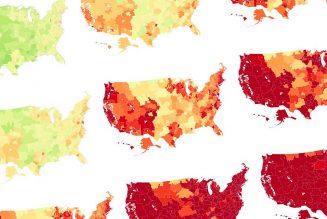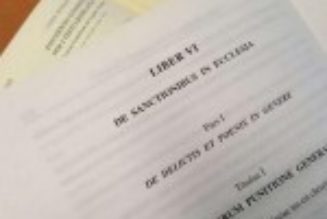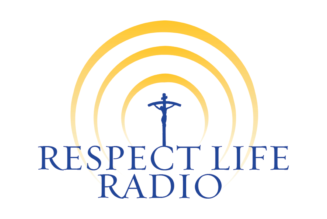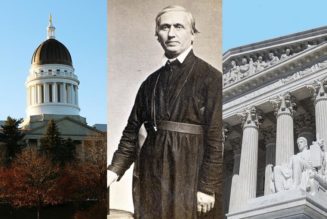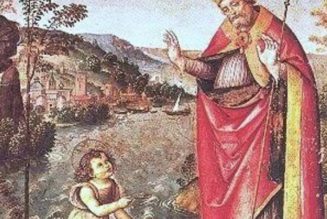
Catholicism:
A Global History from the French Revolution to Pope Francis
by john t. mcgreevy
w. w. norton, 528 pages, $35
In 1489 the Roman Catholic Church felt, and was, hemmed into a corner of the world. The view from Rome was of Africa and Asia long lost to heretical churches or to Islam, and Europe divided between Catholicism and Orthodoxy (itself seen as heretical), while Ottoman power advanced relentlessly up the Balkans. By 1689 the shattering impact of the Reformation had left much of Northern Europe committed to new versions of Christianity—Lutheranism and Calvinism. Yet the association between the Church and the imperial powers of Iberia (and, to a lesser extent, France) had seen the losses in Europe offset by a fresh harvest of souls in more distant fields—on a massive scale in the New World of the Americas, and more modestly in scattered coastal outposts and conquests on a long arc from West Africa to Japan. The Catholic Church had therefore become the first global institution, even if its global presence was patchy. The surge of vitality that accompanied this expansion, and that found expression in the exuberance of the Baroque, was weakening by the middle of the eighteenth century. Eddies of elite skepticism and rising tides of elite anticlericalism, seen at their height in the suppression of the Jesuits in the decades following the seismic year of 1759, were the harbingers of the cataclysm that was the French Revolution.
The foremost historian of American Catholicism, John T. McGreevy, has set about unpacking the tangled and troubled story of the Catholic Church’s encounter with the modern world since that blissful dawn in 1789. He tells us that he undertook this task for two reasons. The first was “to make an argument: a better understanding of Catholicism enhances our understanding of the modern world.” The second was to answer a pressing question for modern Catholics: “How did we get here?” McGreevy’s achievement is undeniable. The narrative has a magnificent, magisterial sweep that really delivers the “global history” promised in the subtitle. A global history in five hundred pages can hardly be exhaustive, but McGreevy’s method, to color and flavor his lucid and well-conceived survey with telling vignettes picked out in finer detail, gives readers a genuine insight into the historical processes at work.
The story begins with one such vignette, that of an expatriate Irish priest, the Abbé Henry Edgeworth, who ministered to Louis XVI as he faced the guillotine on January 21, 1793. This melancholy episode serves to introduce the French Revolution itself, which immediately elicits this astonishing judgment: “Until the Second Vatican Council in the 1960s, no single event in the history of modern Catholicism was as momentous, none as disruptive, as the French Revolution and the subsequent Napoleonic Wars.” The astonishment arises not from what this statement says about the Revolution, but in what it says about Vatican II, the hinge upon which McGreevy’s narrative turns. An ecclesiastical gathering that was intended to promote the “enlightenment, education and joy of the entire Christian people” is judged to be as disruptive to Catholicism as a political movement that in four crowded years made the journey from “Reform Catholicism” through the “Civil Constitution of the Clergy” of 1790 (an attempt to assert State control over the Church) to outright persecution and the introduction of a rival cult of “Reason” in 1793—a new religion whose very short life coincided, tellingly, almost exactly with the Reign of Terror. (One is reminded of the private revelation made to Homer Simpson: Nine out of every ten new religions fail in their first year.)
The Revolution, famously, bred the Reaction, in the form of what soon became known as “ultramontane” Catholicism. Ultramontanism, though focused on the Petrine office and committed to the “plenitude of power” and infallibility of the pope, was not merely an ecclesiological theory but a distinctive vision of every aspect of Catholic faith and practice. Vaunting its rootedness in tradition, especially in a highly idealized vision of the Middle Ages as a Christian commonwealth under the benevolent guidance of the papacy, ultramontanism aggressively reasserted popular piety against the snobbery and sneering of Enlightenment elites. In this it very much resembled Counter-Reformation Catholicism, which had ostentatiously gloried in the saints, miracles, images, relics, pilgrimages, and indulgences so bitterly denounced by the Protestant Reformers. Indeed, there is a case for seeing the French Revolution, for all its devastating impact on ecclesiastical infrastructure, as having enabled the Church to escape at last from the tutelage of the princes of Europe, an escape for which the Council of Trent had called in vain. The fall of the monarchies of the ancien régime left the papacy, after a decade or two of confusion, in uncontested possession of the field, with unprecedented influence and freedom in the appointment of bishops, and thus in the governance and direction of the Church as a whole.
McGreevy’s book might well have been called “The Rise and Fall of the Ultramontane Church,” for this is the theme that holds it together. But though he is duly awed by the immense achievements of ultramontanism, there is more sympathy on show in his wistful evocation of the etiolated “Reform Catholicism” of the late eighteenth century, which so many ultramontanes viewed as selling out. Reform Catholicism, as it has come to be known, represented an effort to align Catholicism with the social and cultural mainstream of Enlightenment Reason. McGreevy’s description of an obviously popular hostility to this somewhat self-satisfied movement as “populist,” a term he otherwise reserves for discussing the Trump-era Catholic Right, is a bit of a tell. This apparent lack of sympathy for ultramontanism may explain why McGreevy, despite giving full credit to its achievement, does not dwell on something that emerges implicitly from his own account of it, namely its inherent modernity. Although the rhetoric surrounding Vatican II has long emphasized the need for the Church to “modernize” and get “up to date,” the hugely successful ultramontane venture was thoroughly modern in almost every way except in how it imagined itself.
Modernity shaped the ultramontane experience, as is evident from the role played in it by mass migration. The millions of Catholics who left Ireland, Germany, and Italy (not to mention smaller nations) for America or the dominions of the British Empire, and the thousands who went as missionaries to European colonies in Africa and Asia, taking their Catholicism and ultramontanism beyond the seas as well as the mountains, all owed their mobility to the railroad and the steamship. McGreevy emphasizes the scale of church-building, not only in the rapidly developing industrial suburbs of Europe but also wherever Catholic migrants settled outside Europe. This was the fruit of a new scale of production of brick and cement. The worldwide devotional homogeneity of ultramontane Catholicism, the result of mass production and the rotary press, made it in effect the first global brand. Popes were among the first individuals whose pictures might be found and recognized anywhere in the world. One figure who really should have got a mention in this book but didn’t is the dodgy priestly entrepreneur Jacques-Paul Migne, whose Ateliers catholiques in Paris virtually printed the ultramontane Church. His steam-powered factory, with its workforce of hundreds, pumped out Catholic literature for decades; he also dabbled in devotional objects. Migne was just one man, and his plant went up in smoke in 1868, but the world of Catholic mass production survived another hundred years, to collapse only after the Second Vatican Council. Ultramontanism was the Catholicism of the industrial age. It was bang up to date.
One of the most remarkable features of ultramontanism, moreover, is the extent to which it was a lay movement. This may seem a paradoxical claim in light of the massive recruitment of secular clergy and of religious men and women throughout this era. But what stands out with startling clarity from McGreevy’s capacious understanding of nineteenth-century Catholicism is that, for all its clericalism, so many of its leading intellectuals were laymen (the intellectual world was still heavily gendered, especially inside the Church): Chateaubriand, de Maistre, Görres, Jaricot, O’Connell, Pugin, Schlegel, Tocqueville (if we may include him), Veuillot, Ward. There were of course intellectual priests as well, but the interesting ones—Lamennais, Rosmini, Newman—often found their priesthood causing problems for their intellectual life, as their engagement with modernity provoked anxiety among bishops. This quiet laïcité underlines the novelty of ultramontanism. The world since 1789 has been, among other things, the world of the intellectuals. Before 1700 there were merely scholars; the “intellectual” was a creature of the Enlightenment. In our time, of course, antisocial media may be bringing that world to an end, replacing the intellectual with the influencer.
McGreevy’s story is a global one, but it is also the story of how the ultramontane Church made a world within a world. The Catholic Church was not alone in adapting to industrial modernity; many other churches and denominations were building churches, founding institutions, and establishing subcultures in this era. But the scale of the Catholic Church makes it the test case. The tradition of corporate charitable action, established during the Counter-Reformation by pioneers such as Vincent de Paul, was taken forward in ever more organized ways. The foundation of the Society of St. Vincent de Paul in Paris in 1833 made this genealogical claim explicit, and it was but one of many charitable and devotional societies that flourished within the Church in that great century of social action throughout European culture. The ultramontane Church was a church of institutions—hospitals, schools, orphanages, and so on—providing essential social services at scale long before the state started to muscle in. As McGreevy astutely points out, members of the male and female religious orders—such as the Sisters of Mercy and the Sisters of Charity, upon whom he shines a spotlight—formed a vast pool of cheap and often skilled labor that kept the costs of these enterprises much lower than they could otherwise have been, establishing a dynamic of mutual benefit that could help to smooth relations between the Church and the state in an era that otherwise saw much church–state tension and conflict.
For the Church’s relationship with modernity was far from unproblematic. Ultramontanism reacted against both political liberalism and nationalism as the spawn of the Revolution, and the new nation-states of Europe often looked upon the Church as an obstacle to their ambitions. The nation-state called for the total loyalty of its citizens, and the Catholic Church, headed by what the English had for centuries labeled a “foreign prince,” was much more obviously an alternative pole of loyalty than any other form of Christianity. From left and right alike, pressure was piled upon the Church in the later nineteenth century, in France, Germany, Italy, and elsewhere. The clash was often fierce, as in the Bismarckian Kulturkampf or the shrill assertiveness of Third Republic laïcité. Catholic institutions were closed or even expropriated, priests and nuns banished, and Catholic laypeople subjected to discrimination. Nationalism was a prodigiously potent force, and the consequent conflict of loyalty pained the faithful, who felt that their spiritual duty was not and should not be incompatible with their temporal loyalty.
Reconciliation did come, though in a horribly problematic fashion, through imperialism and war. Belgian, French, German, Irish, and American Catholics fell loyally in line with imperialist ventures, proving to often suspicious regimes that Catholics were proper patriots. The climax was the Great War (as it was known before we learned to number them). The wounds of the Kulturkampf and Third Republic persecutions were finally healed in the trenches, as Catholics, alongside Protestants and others, attested their loyalty with the supreme sacrifice. What Churchill called the World Crisis of the early twentieth century bred horror and slaughter on a scale that called forth a new word: genocide. And it was for nation-states that all those people killed or died (or both). McGreevy notes Joseph Ratzinger’s observation that this paroxysm of mutually assured destruction “discredited any notion of Western superiority.” As so often with Ratzinger’s insights, it is hard to disagree. A millennium or more of the Christian culture of Europe led to this? Ultramontanism had finally made its peace with the nation-state. But in retrospect that peace looks like unconditional surrender to an engine of destruction.
Between the wars, this new appreciation for the nation-state saw ultramontane hostility to political liberalism bring many Catholics into alignment with authoritarian regimes or currents. The papal condemnation of Charles Maurras and Action française in 1926 shows that it would be a travesty to reckon this tendency universal or even prevalent. But the concordats with Fascist Italy and Nazi Germany show likewise how ill-equipped even the papacy was to navigate those treacherous waters. Many Catholics in Europe and Latin America lent willing ears to exaggerated rumors of the death of democracy, while misgivings about free-market capitalism were often linked with a grotesque stereotyping of Jews and thus with a wider constellation of anti-Semitism. Even in the liberal and democratic context of Catholicism in the United States, McGreevy points out, a Catholic priest reprinted The Protocols of the Elders of Zion—though it is some consolation to learn that he was denounced for this by many co-religionists. But after the way Catholics had been decried by liberals and nationalists in the nineteenth century as agents of a sinister foreign power, it was bitterly ironic that Catholic anti-Semites took up the same cry against Jews.
The aftermath of the Second World War and of the uncovering of the Holocaust saw the ultramontane Church recoil from the illiberal alignments of the interwar years and make its peace with its other old rival, liberalism. McGreevy documents the emergence of a new political force, Christian Democracy, which subsumed this liberal turn in a reaction from nationalism seen most clearly in the gradual emergence of the European Union. The EU was the creation of Catholic politicians, and it perhaps still owed something to the nostalgic medievalism of the ultramontanes. It certainly seemed Catholic enough to be denounced by some anglophone Protestants as the work of the Antichrist! On the global stage, the undisguised hostility of international Marxism-Leninism to organized religion in general and to the Catholic Church in particular set the seal on the Church’s conversion to freedom of religion. It also aligned the Church with the West, broadly speaking, for the duration of the Cold War. It was amid the optimism born of this convergence of interests that John XXIII convened the Second Vatican Council.
Vatican II is the hinge on which McGreevy’s narrative turns. The council holds a special place in the story, which is plain even on the purely literary level: It gets a chapter to itself, the longest in the book and on the shortest period. Vatican II is the only topic on which McGreevy offers us a blow-by-blow narrative. Vatican I, in contrast, gets barely three pages and not even a mention in the index. After the council, moreover, the book’s approach changes sharply. The long history of ultramontanism is structured in terms of the global history within which it took place—French Revolution, Napoleonic Wars, the rise of nationalism and then imperialism, the World Wars, and the Cold War. From the council onward, the story is one of internal church politics, with the pontificates of Paul VI, John Paul II, and Benedict XVI at its heart. It is almost as though Vatican II, which was intended to inaugurate a new era of fruitful encounter with the world, made the Church, in practice, turn in upon itself. The spat over liberation theology and the liturgy wars offer a sorry contrast to the impact of the ultramontane Church upon its world. It is a fitting conclusion to this increasingly disintegrated and inward-looking story that, after fifteen crisp, one-word chapter titles (such as “Empire” and “Exodus”), the final chapter lumbers in under the inelegant heading “Sexual abuse (and its cover-up).” (Did the obvious one-word biblical title perhaps fall foul of a sensitivity reader?)
What McGreevy shows unflinchingly is just how abruptly the Catholic Church tumbled into decline after Vatican II. Thus enrollment in U.S. Catholic schools peaked in 1965. The laicization of priests, never more than a trickle prior to the council, was a torrent by 1970. Mass attendance collapsed throughout the developed world, though not in the decolonized world, where demographic growth remained buoyant. Such a transparent correlation inevitably feeds thoughts of causation, but at this point the analysis goes a little awry. For McGreevy, “The question is simple: Did the reforms of the Second Vatican Council cause the decline in Catholic practice or did they limit its effect?” But this is une question mal posée.
Tempting though it is to see causation in the correlation, a little reflection soon puts paid to that idea. The plummeting attendances and the graying of congregations, the closure of churches and seminaries, the withering of religious orders (where relevant) and organizations, the falling sales of religious newspapers and books—these are not unique to Roman Catholicism but common to all the mainstream churches and denominations of the West, even those without general councils to blame. While we are about it, we can equally easily brush aside the liberal counter-thesis that it was Paul VI’s encyclical Humanae Vitae that alienated the faithful. Other churches have not been spared decline through their more tolerant official attitude to hormonal contraception. For the Catholic right and the Catholic left to trade blows over Vatican II and Humanae Vitae is to miss the point completely.
Yet, turning to the other half of McGreevy’s dichotomy, there is no reason at all to suppose that the changes introduced by Vatican II limited or slowed the decline. The collapse was evidently caused by something else, and the abruptness with which it set in suggests that whereas ultramontane Catholicism had been stemming the tide, Vatican II opened the floodgates. Pius XII, the last ultramontanist pope, though he presided over a flourishing and vigorous Church, nevertheless viewed the Church as a city under siege. John XXIII, in contrast, urged bishops to ignore the “prophets of doom.” In hindsight, one wonders whether that was wise advice. It looks now as though Pius XII may have read the signs of the times rather better than John XXIII or the council.
As I have suggested before in these pages, though the symptoms present themselves in terms of ecclesiastical politics, the problem is much, much bigger than that. Christianity itself is beset by the third existential crisis in its history, a contemporary crisis over the nature of humanity itself, a crisis manifest on the same global scale as the Church herself. More than ever, the question for our times is “What is man?” For Christians, it’s a crisis over the concept of creation, over Genesis itself. Is man created in God’s image? Or are we our own creators? The hypersubjectivism of postmodern culture makes each man or woman, in principle, the unmoved mover of his or her own existence. “You can be anything you want” is the mantra pushed relentlessly by the panoply of consumer capitalism, which preaches the gospel of, in Brad Gregory’s lapidary phrase, “the goods life.” And the goods life finds theoretical expression in the identity politics peddled by academic postmodernism, which fancies itself critical of consumer capitalism but is perhaps better understood as consumer capitalism’s established church. How readily, after all, global corporations have imbibed woke values. The ethics of “autonomy” is pretty much the spiritual equivalent of the supermarket. The reification and idolization of identity are a perfect fit for the theory and practice of marketing in the goods life: It’s all about self-image. What has been and is at work is a seismic cultural shift that became manifest in the 1960s, and which we may come to view as the transition from modernity to postmodernity—if postmodernity endures, that is, which is far from given.
McGreevy’s final chapters do a fair job of telling us where we are as the Church, though from a somewhat narrow and inward-looking perspective. But does he explain how we got here? Only to the extent that he documents the stages by which the crisis has deepened. He has not really addressed the “why” that most of us include in such a question. This is partly because the myth of Vatican II, whether one loves it or loathes it, distracts attention from the bigger picture. On reflection, maybe Vatican II does not deserve the world-historical significance McGreevy and others attach to it. There is a case for seeing it as little more than a sideshow—perhaps an appropriate summary of one of history’s largest recorded committees as it labored to bring forth reams of largely anodyne musings. What was disruptive was the avalanche of liturgical change that followed. A passing acquaintance with the history of the English Reformation might have given those responsible some sense of the potential impact of messing with the sacred in such a cavalier way. But even that revolution pales into insignificance beside the upheaval in the culture at large.
The culture of the West, which was home to most of the world’s Catholics at the start of the twentieth century, and which had by the end of that century seen the most startling falls in Catholic practice, is evidently in crisis. The modern, or postmodern, world is affecting the Church more and more, while the Church’s influence on the world is daily and discernibly weakening. The fate of Pope Francis himself illustrates this fact: He is applauded by the world’s media when he is in harmony with their agenda and is barely reported except in the Catholic press when he is not. In the meantime, his governing style is rather like that of the modern party leader, with the imminent Synod on Synodality looking for all the world like the sort of echo chamber that party leaders love to build around themselves. The ideological waves of our time break relentlessly against the Rock of Peter and seem to be wearing it down. Faith alone assures us they cannot prevail, for the signs we can see are not good. Schism is already visible in Germany and the United States, and it is close to the surface elsewhere. Some cardinals and bishops talk blithely of changing the teaching of the Church—and may be so far deluded as to believe that this is part of their job description. The vile doings revealed in the sexual abuse scandals, along with the contemptibly inadequate handling of such matters by the ecclesiastical authorities, have compromised the moral authority of the Church to an unprecedented extent. In the end, one can do little better than leave the last words to Chesterton: “Hope means hoping when things are hopeless, or it is no virtue at all.” And, indeed:
Night shall be thrice night over you,
And heaven an iron cope.
Do you have joy without a cause,
Yea, faith without a hope?
Richard Rex is professor of Reformation history at the University of Cambridge.
Image by PxHere licensed via Creative Commons. Image cropped.
